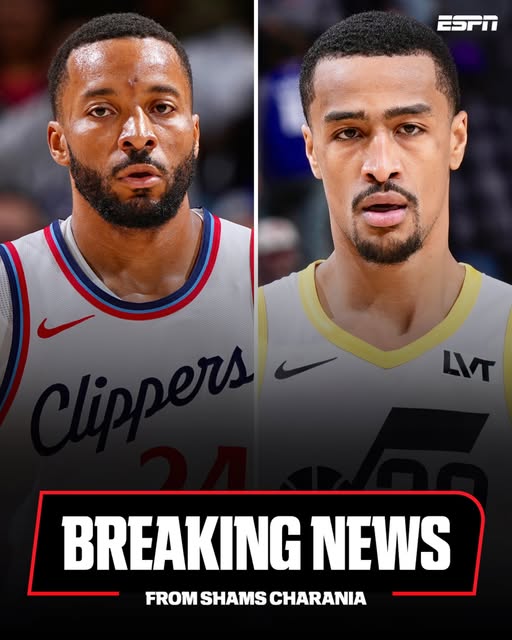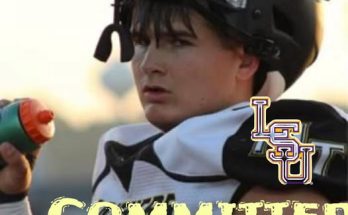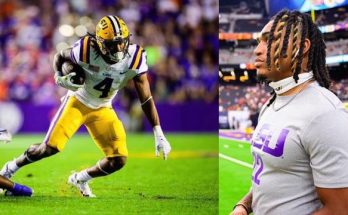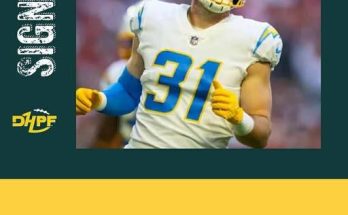In a summer already filled with seismic moves and contract reshuffling across the NBA, another blockbuster deal has just landed, shaking up the Western and Eastern Conferences alike. According to sources close to The Athletic’s Shams Charania, the Los Angeles Clippers, Utah Jazz, and Miami Heat have agreed to a three-team trade that will send Norman Powell to the Miami Heat, John Collins to the Los Angeles Clippers, and Kevin Love, Kyle Anderson, along with a 2027 Clippers second-round pick to the Utah Jazz. On paper, it looks like a relatively clean three-team exchange, but the implications for each franchise reach far beyond a reshuffled depth chart. From long-term cap considerations to competitive windows and player development, this trade signals a deeper set of motivations for all parties involved.
Norman Powell heading to South Beach gives the Miami Heat something they’ve been craving for the last two years: a consistent perimeter scorer who can manufacture his own shot. Though Miami has leaned heavily on Jimmy Butler and Bam Adebayo for their offensive identity, it’s been clear that the team’s offensive droughts—especially during playoff series—have hurt their chances of finishing off opponents. Powell, a proven scorer who can give you 15–20 points a night on efficient shooting, injects some dynamism into the Heat’s half-court offense. His ability to attack closeouts, run pick-and-rolls, and knock down catch-and-shoot threes makes him an ideal plug-in for Erik Spoelstra’s system. While he’s not a traditional point guard or floor general, his presence should alleviate some of the offensive burden off Butler, allowing Miami to space the floor more effectively and move Tyler Herro into a more comfortable role.
There is also a psychological dimension to Powell’s arrival in Miami. This is a franchise that prides itself on “Heat Culture”—a commitment to conditioning, effort, and role accountability. Powell, a grinder who developed from a second-round pick into an NBA champion with Toronto, fits that mold. Miami’s front office likely sees Powell as someone who can thrive under their high-expectation environment. His postseason experience, his familiarity with intense defensive schemes, and his resilience in tough matchups should all make him a reliable contributor in critical playoff moments. Perhaps more importantly, he gives the Heat another rotation player who doesn’t disappear when the pace slows down and defensive intensity ratchets up in May and June.
For the Los Angeles Clippers, acquiring John Collins may seem like a surprising pivot—especially given his recent underwhelming season in Utah—but it’s one that could potentially pay massive dividends if the change of scenery reignites his game. Once considered one of the most explosive young forwards in the NBA, Collins saw his stock fall dramatically over the past two seasons due to injuries, system fit issues, and diminished usage. But the talent is still there: an athletic 6’9” forward with a solid midrange jumper, decent rebounding skills, and pick-and-roll chemistry. The Clippers are betting that in a more competitive and structured setting, Collins can return to the player who averaged over 20 points and 10 rebounds per game just a few seasons ago.
From a fit perspective, Collins could thrive in the Clippers’ system. L.A. has long lacked a true power forward who could space the floor and finish around the rim with authority. They’ve rotated between small-ball lineups and injury-prone bigs, but Collins represents a potential long-term solution. His vertical athleticism, coupled with the playmaking of James Harden and Kawhi Leonard, opens up the possibility for dynamic pick-and-roll combinations and more effective transition opportunities. If Tyronn Lue and his coaching staff can unlock even 80 percent of Collins’ Atlanta form, this trade will look like a steal in retrospect.
There’s also a financial incentive to the move. While Collins’ contract is sizable, the Clippers—already operating above the cap—aren’t shy about spending if it means staying competitive during the final prime years of Leonard and Paul George. With their core aging and the Western Conference getting deeper, L.A. understands that standing pat isn’t a viable strategy. Collins’ upside is worth the gamble. He’s only 26 years old, theoretically entering his athletic prime, and could become a pillar of the post-Kawhi era, especially if George departs in free agency next summer. There’s risk, yes, but it’s a calculated one, particularly since they gave up a rotational scorer in Powell rather than one of their centerpiece stars.
Utah’s angle in the trade might seem less exciting on the surface, but it’s emblematic of a team leaning further into asset accumulation and long-term flexibility. By moving on from John Collins, the Jazz acknowledge that the experiment didn’t work—at least not to the degree they had hoped when they acquired him from Atlanta. Collins never looked entirely comfortable in Will Hardy’s system, and Utah already has promising young frontcourt players in Walker Kessler, Taylor Hendricks, and Lauri Markkanen, the latter of whom was recently an All-Star and may be due a contract extension. Offloading Collins’ remaining salary gives Utah additional cap breathing room in future seasons and a clearer rotation for player development.
In return, the Jazz acquire veteran leadership in Kevin Love and Kyle Anderson. While neither is expected to be a long-term fixture, their presence serves multiple functions. First, both are smart, high-IQ players who can serve as mentors for Utah’s younger core. Love brings championship experience and remains a capable floor-spacer and rebounder when used in the right matchups. Anderson is one of the NBA’s most unique forwards, a slow-paced facilitator whose methodical style could help orchestrate the Jazz’s second unit. If Utah decides not to keep them beyond this season, both players also represent potential trade chips at the deadline or simple salary ballast for future transactions.
The added 2027 second-round pick from the Clippers is a small but valuable asset, especially for a front office that has done well in maximizing draft capital. In the modern NBA, second-rounders have become more important, especially for teams trying to build through the draft while maintaining cap flexibility. Utah already owns a war chest of picks from previous trades involving Rudy Gobert and Donovan Mitchell, and this only adds to their long-term ammunition.
Overall, this trade reflects three franchises in very different phases of their team-building journey. Miami is in win-now mode, desperate to extract another title run out of the Jimmy Butler window and willing to take risks to strengthen their depth. Norman Powell provides a low-risk, high-reward piece who fits their culture and gives them more scoring options in high-leverage moments. For the Clippers, this is a forward-thinking move designed to support their aging stars while injecting fresh energy into a lineup that has suffered from stagnation. John Collins is not a savior, but he could be a stabilizer or even a breakout contributor if given the right role. For Utah, the deal is a course correction—a small step back that could yield a bigger leap forward later. With more cap space, a clearer rotation, and added assets, the Jazz continue to play the long game in a league that increasingly rewards patience and prudence.
There’s something almost poetic about the structure of this trade. It’s not about landing a superstar or flipping the championship odds overnight. It’s a nuanced, multi-layered maneuver where each team gives up something it no longer needs and receives something that could either elevate its current ambitions or strengthen its long-term outlook. These are the trades that don’t make the biggest headlines initially but often become pivotal when teams look back at the subtle choices that shaped their destiny. Whether this move helps Miami return to the Finals, revitalizes John Collins’ career in L.A., or clears the path for Utah’s next franchise star remains to be seen. But one thing is clear—none of these organizations are standing still, and in today’s NBA, movement is everything.



